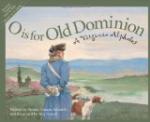[Illustration: Peale’s portrait of George Washington.]
It is a noted and invaluable canvas that hangs there at Shirley, and it is doubtless a good likeness of the Father of our Country; but it is not just the George Washington that most of us have in our mind’s eye. When the average American thinks of hatchets and cherry trees and abnormal truthfulness, the face that rises before him is that benign and fatherly one that he has seen a thousand times in the popular reproductions of the portrait by Gilbert Stuart. Just as for generations only the good has been told of George Washington, so has this handsomest picture (doubtless a trifle flattering) always been the popular one.
However, in this day, when the ideal George Washington of story is being ruthlessly brushed aside in the search for the real flesh-and-blood man, any canvas also that has idealized him is somewhat in jeopardy.
It is well that the Washington of Sparks and of Irving and of Stuart should be superseded by the truer Washington of Mitchell and of Ford and of Peale; but the result will be that, for a while, the country will scarcely recognize its own father.
Always at Shirley our interest came back to the old colonial hall. Of course, to get the good of it, one had to set one’s eyes so as to throw out of focus many marks of modernism; but that adjustment would almost come of itself with a little study of quaint transoms, or of ancient hatchments, or, above all, of the time-worn stairway.
Why is it that the spirit of the long-ago so clings about an old stairway? Why should the empty stair seem to remember so much, to suggest so much, of a life that came to it only in fitful passings and that left nothing of itself behind?
There were no signs of that long by-gone life upon Shirley’s stairway, save for a dimming of the old rail where countless hands—strong, feeble, fair—had lightly rested or, more helpless, clung; and save for that worn trail of the generations that followed up the dull, dark treads. But even these had much to tell of the passings for nearly two centuries and a half up and down this household highway: of the masterful tread of spur-shod boots, the dancing of the belle’s slim-slippered feet, the pompous double steps of bumpy baby shoes, the gouty stump of old grandsire, and the faithful shamble of the black boy at his heels.
That day (regretfully our last in this colonial home) not only the stairway but all of the old house seemed inclined to become reminiscent. Nautica noticed this in the quiet drawing-room that would keep bringing up by-gone times, and, she insisted, by-gone people too. In the great hall, even the Commodore felt the mood of old Shirley and the presence of a life that all seemed natural enough, but that must have come a good ways out of the past.
On the staircase, despite the dim light over there (or because of it), one could even catch sight of a shadowy old-time company.




